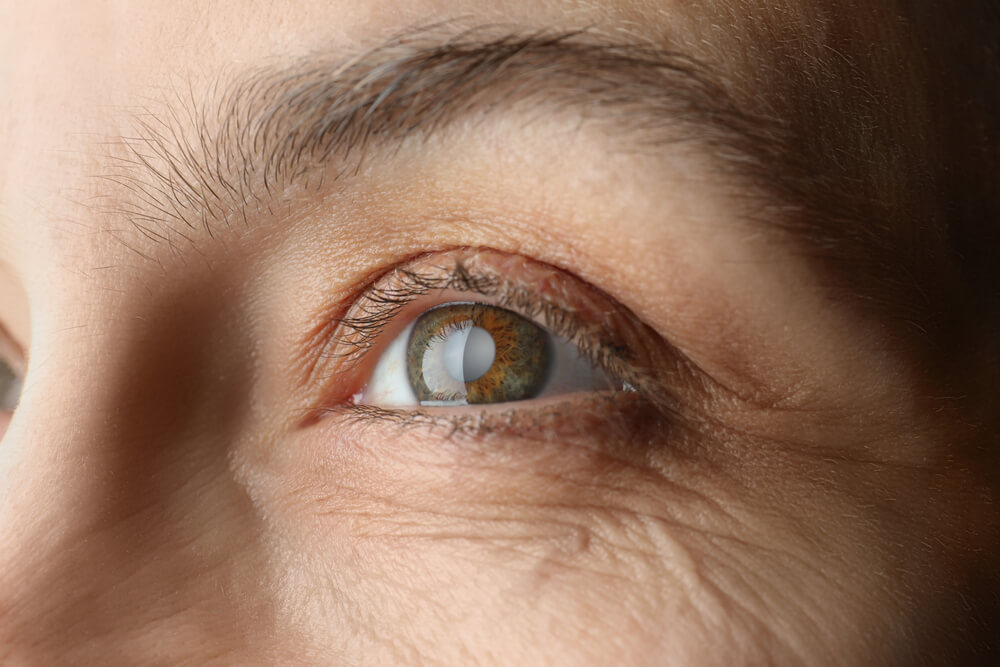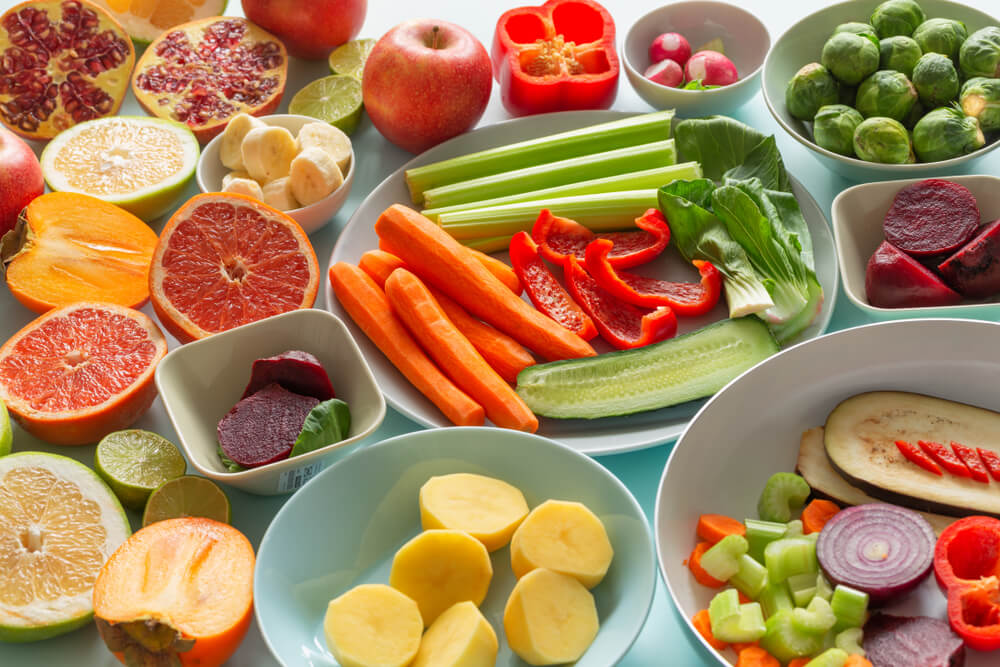
As you may know, cataracts are cloudy spots that can occur on the lens of the eye as a result of proteins clumping together. In standard cases, the lenses are clear, and their job is to steer light into the retina, which is a part of the typical seeing process.
If you’ve read the blog posts from the team at Diamond Vision before, then you know that several risk factors can increase your chances of developing cataracts, and unfortunately, avoiding these won’t automatically mean that the condition can be prevented. For example, there are risk factors that are out of our control, such as age.
Still, Before opting for cataract surgery, it’s a clever move to at least slow down the development of the condition. These steps can be especially helpful if you have a family history of the condition or have already begun to develop cataracts.
Can Cataracts Be Prevented?
As mentioned above, cataract development can’t be prevented in every case, but specific lifestyle changes can slow the progression. On the other hand, by scheduling regular eye exams with your provider, you can get a list of tailored preventive measures to help you avoid or slow down specific vision problems that you may have a higher risk.
On the other hand, keeping your expectations realistic when following these steps is essential if you are already dealing with cataracts. Also, working with your provider to address any possible vision changes is imperative.

How Does a Cataract Form?
For the most part, cataracts develop due to regular eye changes that come with aging. Still, how does a c, cataract form? At around 40, the proteins in the eye’s lenses may start to break down and clump together, forming a cataract. These clumps can make your vision cloudy. Over time, these clumps may worsen, making your image even more clouded.
How To Prevent Cataracts – Helpful Measures
While you can’t rule out the development of cataracts in every case, there are several lifestyle and health measures patients can take that may help reduce their risk of cataract development.
Still, please remember that Instead of relying on substantial evidence to prove their ability to prevent cataracts, most of these recommendations are founded on factors acknowledged or suspected of playing a role in the development of the condition. As a matter of fact, there’s no solid evidence from the scientific community stating that cataracts can be prevented.
Still, these steps may help you reduce your risks of developing the condition.
Protecting Your Eyes from UV Rays
Wearing protective sunglasses that shield your eyes from ultraviolet (UV) rays can potentially hinder or decelerate the progression of cataracts. Specifically, Ultraviolet B rays pose significant harm to your eyes, so it is crucial to seek out sunglasses that offer adequate protection.
It is advisable to wear protective sunglasses whenever you are outdoors during daylight hours, regardless of whether the sun is exceptionally bright or positioned in a way that impairs your vision. Numerous eyewear vendors provide affordable prescription sunglasses online.
If you prefer not to wear sunglasses outdoors or seek protection indoors, you can opt for regular clear glasses with a coating that blocks UV rays. Still, It is recommended to consult your doctor to explore the available options and the advantages associated with each type of protective eyewear.
Address Health Problems That May Contribute To Cataract Formation
Specific chronic health problems like hypertension and diabetes contribute to cataract development.
Because of this, keeping your blood sugar within healthy ranges is essential to prevent any high glucose level-related eye damage.
Also, take your prescribed medicine for high blood pressure, and make an effort to check your pressure regularly. If you are experiencing that your blood pressure is higher than supposed to be, consult your doctor about intensifying or changing your treatment.
Quit Smoking and Limit Your Alcohol Intake
Using tobacco can lead to several cardiovascular problems and may induce issues in the eyes’ blood vessels as well, which may contribute to cataract development and/or progression.
On that note, talk to your healthcare provider about your options regarding quitting smoking. There are several methods available, including both motivation-based and medical strategies.
Also, consider cutting back on alcohol consumption. Drinking large amounts of alcohol has been linked to an increased risk of cataract development.
If you are experiencing problems with limiting your alcohol intake, consult your provider about options such as counseling, group-based therapy, and medications. Frequent excess alcohol consumption can lead to various health and social issues that can be avoided with the right strategy.
Visit Your Provider for Regular Eye Exams
Although a visit to your eye doctor will not directly stop the occurrence of cataracts, it can assist in keeping you informed about your cataract status and provide insights into preventive measures or management strategies.
Additionally, once cataracts begin to develop, it becomes crucial to monitor your condition through regular appointments. It is advisable to consult with your doctor to determine the recommended frequency of office visits.
As per the National Eye Institute, it is generally recommended that adults over the age of 60 undergo a comprehensive eye examination at least every two years. This practice also aids in screening for other conditions, such as macular degeneration and glaucoma, which may require treatment that the presence of cataracts could complicate. Still, in those cases, patients can opt for cataract surgery before receiving therapies for the abovementioned conditions.
Eat A Healthy Diet Rich in Plant-Based Options
A rich and balanced diet that includes lots of vegetables and fruits will give you the number of nutrients and vitamins needed to keep your eye health optimal.
Both vegetables and fruits have high levels of antioxidants, supporting vision and eye health.
On that note, there are scientific studies that have shown that a diet rich in minerals and vitamins can lower the risks associated with cataract development; the same hasn’t been demonstrated in supplements such as pills. Increasing your mineral and vitamin intake through healthy whole foods is probably best.

Cataracts Prevention Myths
Lastly, it’s critical to know the difference between the methods that can help you lower your risk of cataracts and other methods that don’t have supportive scientific evidence to back them up.
According to the National Eye Institute, ongoing research into the impact of different supplements on cataract development has yielded mixed results, and no specific recommendations are currently supported.
As such, it is always best and safest to consult your eye care provider before starting any supplementation regime to improve your eye health.
Learn More
The steps mentioned above may help you reduce the risks associated with cataract development. Unfortunately, they can’t be prevented in every case, but that doesn’t mean patients can’t receive adequate treatment. To learn more about treatment options, such as cataract surgery, feel free to contact us online or visit our nearest practice in your area.
Contact Us
If you have more questions about LASIK procedures, get in touch with us.
Related Blogs

Who Should Not Have Laser Eye Surgery
Laser eye surgery, commonly known as LASIK (Laser-Assisted In Situ Keratomileusis), has revolutionized the world of vision correction. It’s a procedure that has enabled millions

LASIK eye surgery: What is LASIK and how does it work?
What Is LASIK? Experts categorize LASIK as a refractive eye surgery in which lasers are used to correct vision problems. LASIK corrects several refractive errors,

Everything You Need To Know About The Lipiflow Treatment
LipiFlow is often referred to as a ground-breaking technology that is able to treat dry eye issues caused by meibomian gland dysfunction, or MGD. Experts
